The Elephant, Sewol and Brexiteers
Saturday 13th April 2019 in London, three years ago seems very distant to me now.
Love the Elephant, Elephant & Castle, London
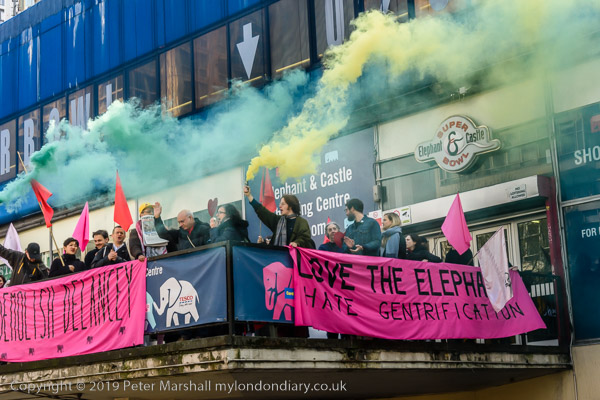
The main event I covered on the day was at the Elephant & Castle shopping centre in south London, where local people and supporters were calling on Southwark Council and developers Delancey to improve the plans for the redevelopment of the area.
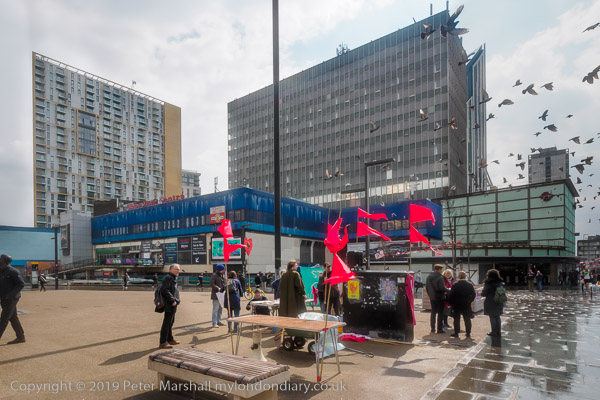
The campaigners main banner had the message ‘LOVE THE ELEPHANT – HATE GENTRIFICATION’ and this is an area that epitomises the changes that have been taking place in many of London’s poorer areas for many years now. Traditionally working class South London, this area has been at the centre of major demolitions of large council estates and their replacement largely by expensive high rise blocks at market rents with a nominal amount of so-called ‘affordable’ and miniscule amounts of truly social housing.
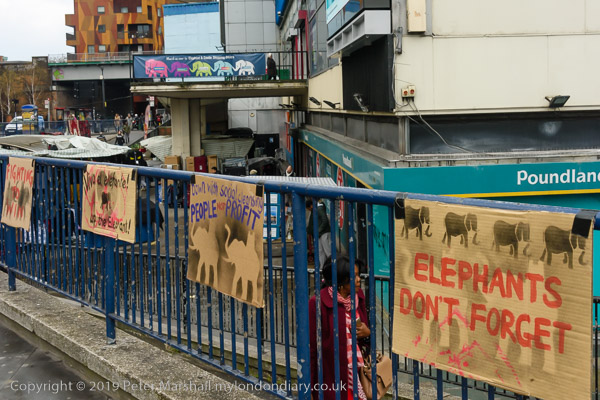
Immediately to the east of the shopping centre had been the award-winning Heygate Estate, completed in 1974, once popular for its light and spacious flats, but long subjected to a process of managed decline by Southwark Council who even employed PR consultants to emphasise a negative view of the estate, together putting together what the estate’s architect Tim Tinker described in 2013 as a “farrago of half-truths and lies put together by people who should have known better.” The council deliberately used parts of it in the latter years to house people with mental health and other problems, and as temporary accommodation. I photographed the estate on several occasions, most recently on a tour by residents opposed to the redevelopment of both the Heygate and the neighbouring Aylesbury Esate in 2012, Walking the Rip-Off.
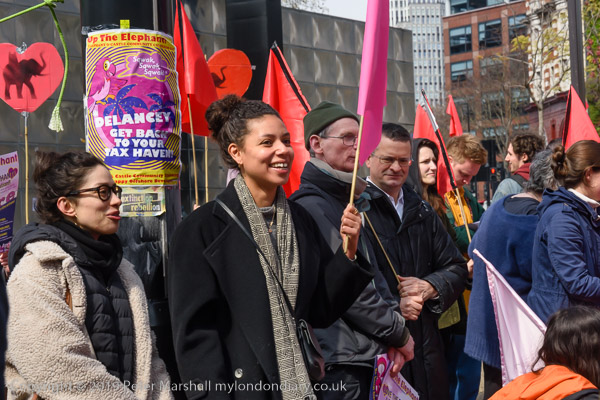
The Heygate estate had a mixture of properties with large blocks of flats on its edges and contained 1,214 homes, all initially social housing, though many were later purchased by residents who became leaseholders. It’s replacement, Elephant Park is far less well planned but according to Wikipedia will “provide 2,704 new homes, of which 82 will be social rented. The demolition cost approximately £15 million, with an additional £44m spent on emptying the estate and a further £21.5 million spent on progressing its redevelopment.” The council sold the estate to the developers at a huge loss for £50m.
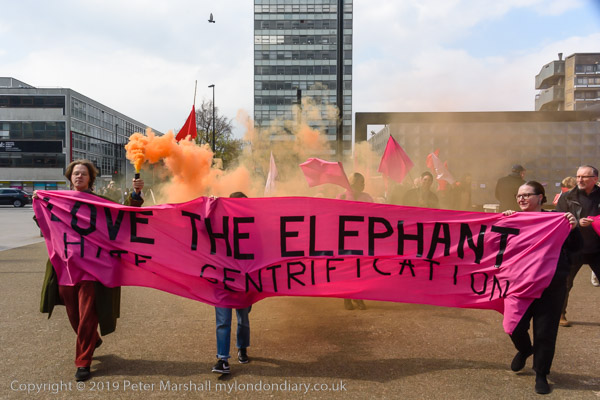
Many of the flats on Elephant Park were sold overseas as investment properties, the continuing increases in London property prices making these a very attractive holding. The new estate will also provide housing for those on high salaries in London, with a railway station and two underground lines providing excellent transport links for professionals working elsewhere in the city. Those who previously lived and owned properties on the Heygate have had to move much further from the centre of the city, some many miles away.
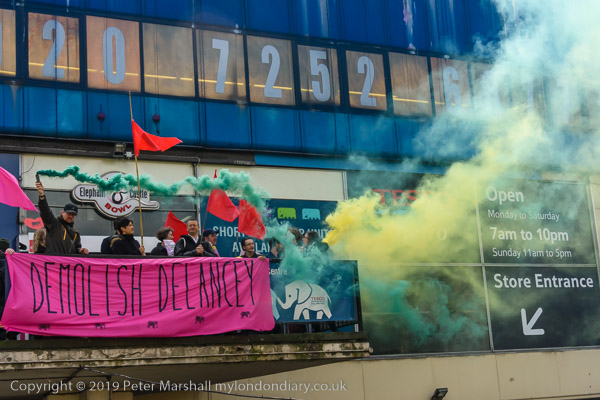
The Elephant & Castle Shopping Centre, was opened in 1965 on the site of the 1898 Elephant & Castle Estate which had been badly damaged by wartime bombing, and was the first purpose-built shopping centre in the UK and certainly one of the first in Europe. Many of its 115 shops were then owned by local traders.
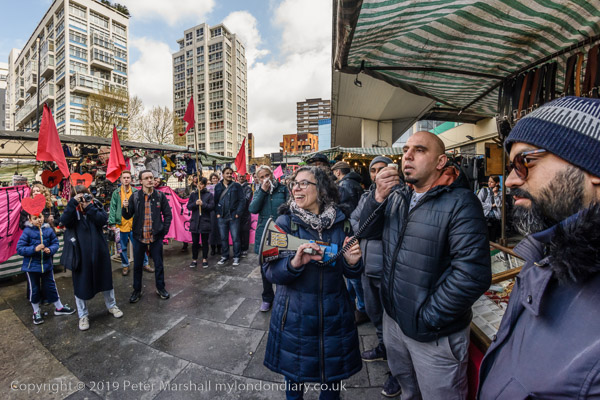
The rally and procession by Southwark Notes, Latin Elephant and Up the Elephant at the Elephant & Castle called on Southwark Council and the developers Delancey to develop the Elephant for the existing population and users, rather than as social cleansing to attract new, wealthier residents and shoppers. They would like to see a development that retains the existing character of the area which has become very much a centre for South London’s Latin community many of whom live in the surrounding area. It became the most diverse and cosmopolitan shopping centre in London, with also other amenities such as a bowling alley and bingo hall, serving the population of the area.
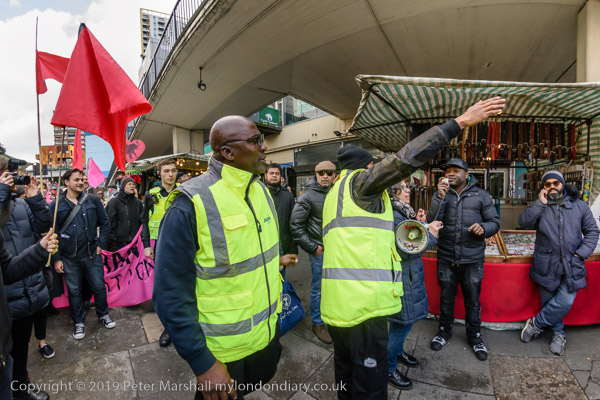
They say the development should include more social housing and call for fairer treatment of the market traders, who should be provided with ‘like for like’ new spaces at affordable rents and be given adequate financial compensation for the disruption in business the development will cause.

A long series of protests in which locals were joined by students from the London College of Communication whose new building forms a part of the redevelopment did lead to some minor improvements to the scheme by the developers, but the shopping centre closed in September 2020 and demolition went ahead and was complete around a year later. The new development will include high-rent shops, almost certainly mainly parts of major chains, expensive restaurants and bars and plenty of luxury flats, along with a small amount of “affordable” housing.
Sewol Ferry Disaster 5 years on – Trafalgar Square
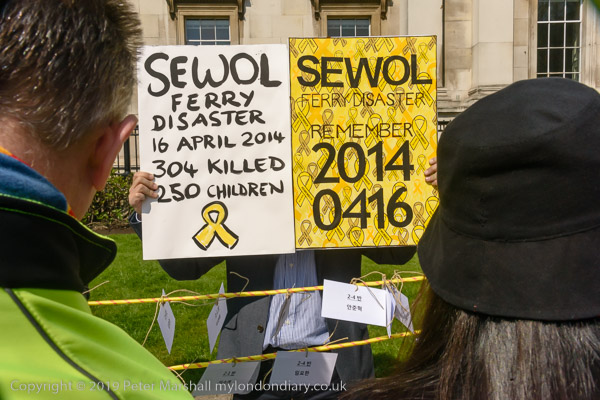
The good transport links that make the Elephant so attractive to developers also took me rapidly into the centre of London as the procession of protest there came to and end, although events there were continuing all afternoon – only four stops taking 6 minutes on the Bakerloo Line to Charing Cross.
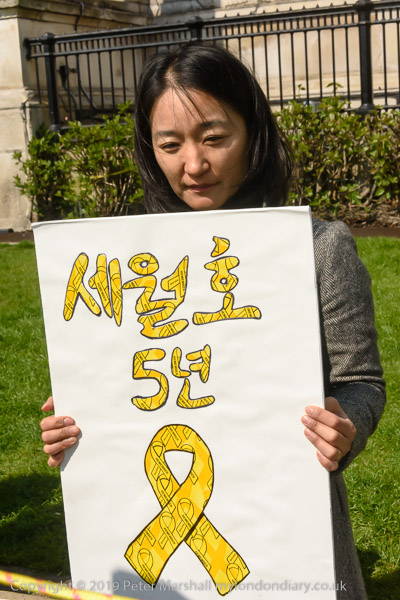
I’ve photographed the small monthly vigils by campaigners in remembrance of the victims and in support of their families of the 304 people who died in the Sewol Ferry Disaster of 16 April 2014 on a number of occasions, though its always difficult to find anything new to say, either in words or pictures.
But this was a special event, the fifth anniversary of the disaster, and the 60th 60th monthly vigil. Campaigners continue to call for a full inquiry, the recovery of all bodies of victims, punishment for those responsible and new laws to prevent another similar disaster. They tie cards on lines with the class and name of the 250 high school children who were drowned after being told to ‘stay put below deck’.
Brexiteers march at Westminster – Westminster Bridge
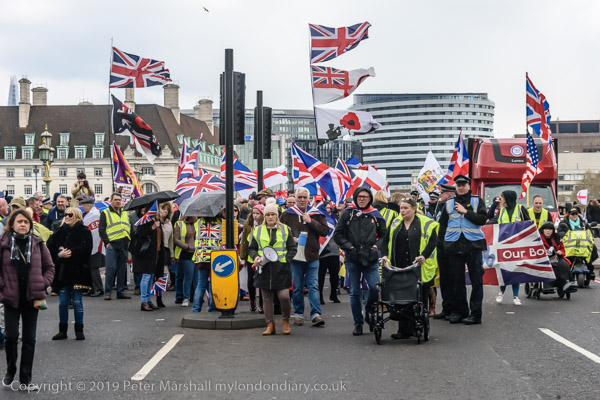
Brexiteers were continuing to march weekly around London holding Union Jacks, St George’s flags and placards and many wearing yellow high-viz jackets because although there had been a small majority in favour of leaving Europe in the 2016 referendum, Parliament had not found a way to get a majority to pass the legislation needed. It was this indecision that led to a resounding victory for Boris Johnson in the 2019 election in December, though unfortunately his ‘oven-ready’ agreement has turned out to be extremely half-baked and most of the things dismissed by Brexiteers as scaremongering have turned out to be true, while the promises made by the Leave campaign have so far largely failed to materialise and most seem unlikely ever to do so.
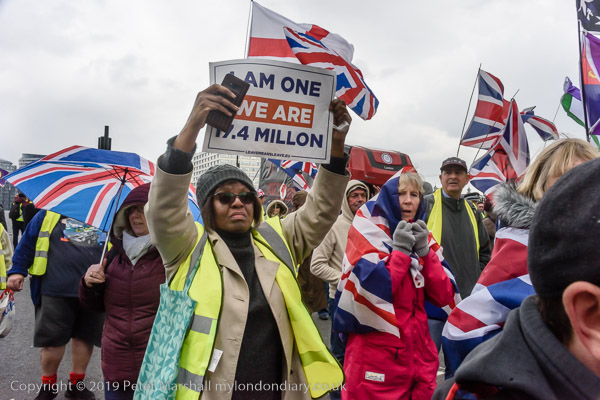
Johnson’s deal – important parts of which he seems not to have understood, particularly over the Irish border arrangements has left us in the worst of all possible worlds, though it has made some of his wealthy friends – including some cabinet members – considerably wealthier and protected them from the threat of European legislation that would have outlawed some of their tax avoidance. Back in 2019 I commented “We were sold the impossible, and things were made worse by a government that thought it could play poker when what was needed was a serious attempt at finding a solution to the problems that both the UK and Europe face.”
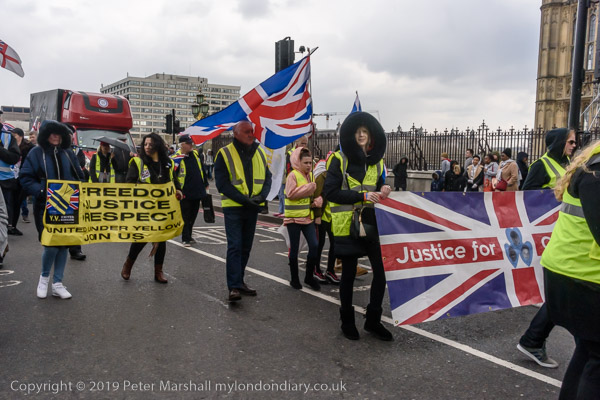
The protesters were also protesting with flags and banners supporting members of the armed forces against their trial for killings in Northern Ireland and for the Islamophobic campaign ‘Our Boys’ which seeks to have a drunk driver of Hindu origin who killed three young men prosecuted as a terrorist.